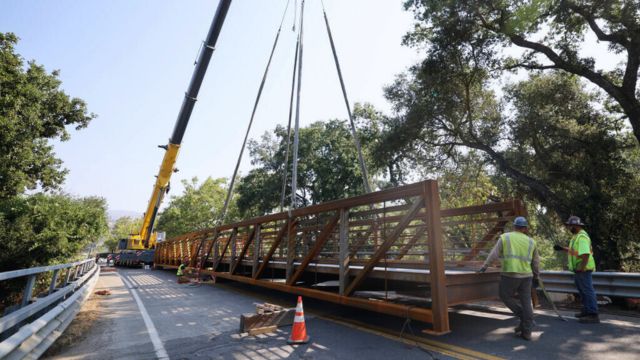News
Vine Trail Bridges and their Environmental Impact
09/08/2023

by Maureen Gaffney
Have you seen it? The new segment of the Napa Valley Vine Trail from St. Helena to Calistoga is under construction! To see this long-running dream coming to fruition is incredibly uplifting and every single person from the project cheerleader to the trail designer to the bean-counter should be proud of their involvement. It really DOES take a village, and this one deserves a hearty pat on the back.
Building a 47-mile trail through an iconic and beautiful grape-growing region requires careful attention to environmental impacts. Not only is this focus a fundamental value of the Napa Valley Vine Trail, it is also required by law under the California Environmental Quality Act, or CEQA. This responsibility fell to the Napa Valley Transportation Authority (NVTA) who herded the various cats needed to measure, monitor, avoid, and mitigate.
You may have noticed in particular the three areas along Highway 29 where bridges are being constructed—the 120’ Dunaweal bridge, the 80’ de Connick bridge, and the 36’ Twomey bridge. The Dunaweal bridge is needed in order to span the Napa River. Only a handful of feet wide in this location, it is hard to imagine it is the same river that is plied by a wide variety of watercraft just a few miles down.
The de Connick bridge is needed in order to avoid a vernal pool and wetlands, and the Twomey bridge spans a culvert. All of these trail features are designed with great care to first avoid any impacts to waterways, plants, animals, soils, etc. For example, the de Connick bridge was slightly reoriented so that it would not shade the wetland, and the slopes were designed in such a way that stormwater runoff would flow to nearby upland area and not into the wetland.
If impacts are truly unavoidable—as they occasionally are—mitigation measures are incorporated to reduce the overall impact to a “less than significant” level. One thing that is hard for a CEQA review to capture is the benefit that will accrue from the project over the long term. How many car trips will be replaced by feet or wheels? How much greenhouse gas will not be emitted because there is an alternative, clean, and green pathway? Even harder to quantify, how many mental and physical health benefits will be directly related to the presence of this amenity?
With completion coming soon, we will soon see residents, visitors, cyclists, pedestrians, school kids and more using the trail where trucks, dozers, and cranes now dot the trail. Until then, slow down, give them a wave, and we know you are eager, but please stay off the path until it is truly complete and open to all. We promise it will be worth it!